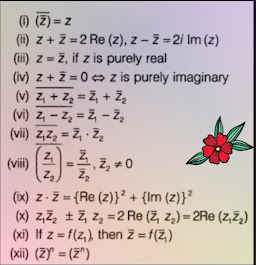What is Quadratic equation with Formula?
A quadratic equation in x is an equation that can be written in the form of ax² + bx + c = 0; where a,b and c are. real numbers and a≠0.
Another name for a quadratic equation in x is 2nd degree polynomial in x.
Roots of Quadratic Equation Examples
(i) x² - 7x + 10 = 0 ; a = 1 , b = -7 , c = 10
(ii) 6x² + 4x - 13 = 0 ; a=6 , b = 4 , c = -13
(iii) x² = 8 ; a = 1 , b = 0 , c = -8
(iv) 3x² - x = 0 ; a = 3 , b = -1 , c = 0
Solutions of Quadratic equation
There are three basic techniques for solving a quadratic equation:
- By factorization
- By completing square , extracting square root
- By applying the quadratic formula
factorization:
It involves factoring the polynomial ax² + bx + c. It makes use of the facts that if ab=p , then a = 0 or b=0
Examples of factorization
x² -7x+10 = 0
(x-2) (x-5) = 0
either x-2 = 0 ⇒ x = 2
Or x-5 = 0 ⇒x = 5
so, solution set = {2,5}
The solution of an equation are also called its roots.
in the upper example 2 and 5 are roots of the equation x² -7x+10 = 0
By completing square:
Sometimes, quadratic polynomials are not easily factorable.
for example, consider x² + 4x - 437 = 0
It is difficult to make factors of x²+ 4x -437. In such a case factorization and hence the solution of quadratic equation can be found by the method of completing square and extracting square roots.
Examples of completing square method:
x² + 4x - 437 = 0
⇒ x² + 2(4/2)x = 347
Add (4/2) =(2)² to the both sides
x² + 4x + (2)² = 437 + (2)²
⇒ (x+2)² = 441
⇒ x+2 = ±√441 = ±21
⇒ x= ±21 - 2
x = 19 or x = -23
Hence solution set = {-23,19}
By applying the quadratic formula:
Again there are some quadratic polynomials which are not factorable at all using integral coefficients. In such a case, we can always find the solution of a quadratic equation ax² + bx + c = 0 by applying a formula which is known as quadratic formula This formula is applicable for every quadratic equation.
it is:
x= -b ±√b² -4ac /2a
Derivation of quadratic formula:
Standard form of a quadratic equation is:
ax² + bx + c=0, a≠0
Step 1 Divide the equation by a
x² + b/a(x) + c/a = 0
Step 2 Take constant terms to the R.H.S
x² + b/a(x) = -c/a
Step 3 To complete the square on L.H.S. add (b/2a)² to the both sides
x² +b/a(x) +b²/4a² = b²/4a² - c/a
⇒[x+b/2a]² = b²-4ac/4a²
⇒ x+b/2a = ± √b² - 4ac/2a
⇒x= -b/2a ±√b² - 4ac/2a
x= -b±√b² - 4ac/2a
Hence the solution of the quadratic equation ax² +bx +c = 0 is given by
x =-b±√b² - 4ac/2a
which is called quadratic formula.
Example of applying the quadratic formula:
6x² + x - 15 = 0
a = 6 , b = 1 , c = -15
Putting the values in quadratic formula:
x=-b±√b² - 4ac/2a
= -1 ±√(1)² - 4 (6)(-15)/ 2(6)
= -1 ±√361/ 12
= -1±19/12
i.e., x = -1+19/12 or x= -1-19/12
x=3/2 or x= -5/3
Hence,😊
solution set = {3/2 , -5/2}











0 Comments